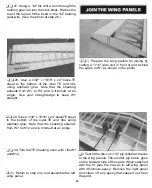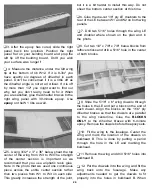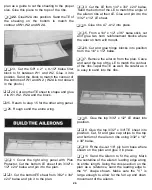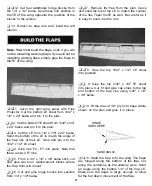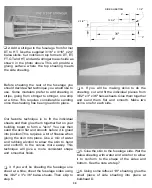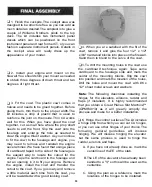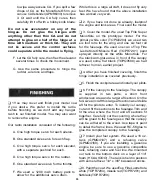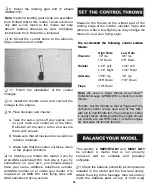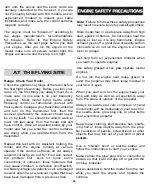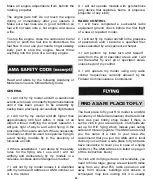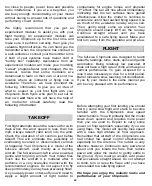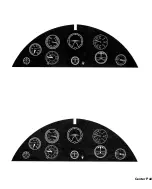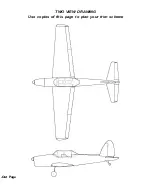
halves next to the fuselage.The balance point is
shown on the plan and is 5-1/2" (140mm) aft of
the leading edge.
Q 2. This is the balance point at which your
model should be balanced for your first flights.
Later, you may experiment by shifting the
balance point up to 1/2" (12mm) forward or back
to change the flying characteristics.
5-1/2"
[140mm]
Q 3. Lift the upside-down model with your
fingers at the balance point or use the Great
Planes C.G. Machine'" (GPMR2400). If the tail
drops, shift the receiver and/or battery pack
forward (if possible) to balance the model. If the
nose drops, shift the receiver and/or battery
pack aft. If possible, arrange the battery pack
and receiver to achieve balance but make sure
they remain secure in the fuselage so they
cannot shift during flight or a rough landing. If
you must add additional weight to the nose or
tail of the Chipmunk to achieve balance, use Great
Planes Self Adhesive Lead Weights (GPMQ4485).
An alternative to self adhesive weights (if your
model is tail heavy) is a Great Planes Brass
Spinner Weight (GPMQ4646).
Do not confuse this procedure with
"checking the C.G"
Now that the model is covered and nearly
completed, this is the time to balance it laterally
(side-to-side). Here's how:
Q 1. With the wing level and attached to the
model (and the engine and muffler installed),
lift the model by the propeller shaft and the fin.
this may require an assistant. Do this several times.
t-1 2. The wing that consistently drops indicates
the heavy side. Balance the model by adding
weight to the other wing tip.
An airplane that is laterally balanced will track
better during aerobatic maneuvers.
ATHOME
Balance your Propellers
Balancing the propeller seems like one of those
things that you can skip, but many problems
are the result of vibration caused by an
unbalanced propeller. Nuts and bolts can
vibrate loose and vibration can damage delicate
radio components inside your receiver and
servos. Vibration can even damage the glow
plug element which could result in an engine
that is difficult or impossible to start. We use a
Top Flite Precision Magnetic Balancer'" (TOPQ5700)
in the workshop and keep a Great Planes
Fingertip Prop Balancer (GPMQ5000) in our
flight box.
Charge Your Batteries
Follow the battery charging instructions in the
instruction manual that came with your radio
control system. You should always charge your
batteries the night before you fly.
Ground Check Your Radio
Inspect all nuts, screws and wheel collars. Make
sure you install the screw that holds the servo
37

